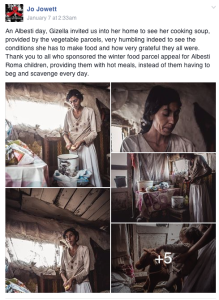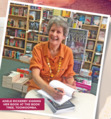Adele Rickerby's Blog, page 14
February 26, 2016
The Romanian Town’s Revolution
Over the last twenty-five years, I have read numerous accounts of the 1989 Romanian Revolution. These accounts have always varied in important details, and left me wondering what was to be believed and what was not.
I have gotten to know Diana Mesesan as a reliable journalist with an outstanding command of the English language. This article is a first hand account of the revolution, told by her parents.
I believe that it is really important to record the history for future generations. This is how the revolution unfolded, during an inappropriate Spring in the small town of Zalau, where her young parents lived.
The 2-hour Revolution in a small Romanian town
The 1989 Revolution that marked the fall of Communism in Romania, seen through the eyes of a couple living in Zalau, the smallest county capital.
On the morning of December 22, 1989, Zalau was covered in silence and in an inappropriate spring. Zalau is a small city in northwestern Romania, where Viorica Mesesan and Ilie Mesesan met, got married, received an apartment from the State, gave birth to a child and then experienced a Revolution.
Ceausescu had held his last speech on December 21, 1989, in front of millions of burning heads, deaf to his words (or maybe for the first time actually listening), and on December 22, at noon, he and his wife climbed in the helicopter and ran away. Viorica and Ilie went to work that day like on any other normal day .
Viorica, 35 back then, was working for the municipality in a building right next to the central square. She and her colleagues were gathered in the main hall that day, in front of a TV, watching mesmerised what was going on there. She remembers Ceausescu’s last speech, promising to raise children’s allowance by 100 lei and Dinescu, announcing that Ceausescu and his wife ran away. Two of her colleagues took Ceausescu’s portrait, threw it on the ground, stamped on it and then ran out of the building to the central square, trying to convince other people to join them. It was the portrait of a person no one had even dared to make a joke about before, which now turned into little glass pieces. Her husband Ilie, 34, remembers too such an image: different portraits of Ceausescu, flying out of the windows and breaking down on the alleys of the factory where he was working.
The morning silence which was covering the city was only a deceiving one. There was a great tension hiding behind that silence which exploded when the announcement was made that Ceausescu ran away. Those in factories stopped their work and formed a march to the center of the city. Around 3,000 women and men, taking advantage of the almost spring-like winter that year, singing and shouting among radio announcements, walked to the central square (in picture). Ilie was among them and he perfectly remembers the enthusiasm he was feeling then. An enthusiasm his wife doesn’t recall. She only names fear and confusion among the feelings. “I cannot say that we were very enthusiastic. We didn’t really know what was happening and what kind of consequences this would have on us,” remembers Viorica.
The people gathered in the central square waiting to see what will happen. Who – and what – will come next. The secretary of the county, a woman called Maria Stefan, tried to talk to the people, but they refused to listen to her. They were only receptive to the speech of the Army Commander, who assured them that no fire was shot or would be shot, that he gave orders to the Army not to interfere with the population. In the end, indeed there was no gun shot. At least Ilie remembers it that way and his wife too.
But Ilie’s cousin, Nelu, a communication engineer, remembers the story differently. He was called in those days by the secret police (Securitate) to do some interceptions and he recalls perfectly the gun shots, which stayed in his mind for some months after everything ended. But memories are vague and history is just a collection of these memories.
Ilie remembers that they were gathered in the central square when they heard the news at some loud speakers. “The Ceausescus were caught in Targoviste. They are being held at the Military Section number…from Targoviste. Please stay calm, there will be a law suit”. He tells it exactly how he heard it that day, using the present tense, like it would happen now. Those were words with such a great impact, words he has never forgotten and have stayed with him for 25 years. The heroes of the day in the small city of Zalau were the figures talking to the people gathered in the central square. They were different factory managers, professors, mostly people who had the power to influence, to capture trust, to assure their place in the new order. Patriotic songs, flags with the communist symbol cut out showed everywhere, loud speakers bringing news, this was the 2-hour gathering in the central square and the short Revolution in Romania’s smallest county residence, Zalau. Then people returned to their houses and followed the Revolution on TV.
The TV is the central character in the memories of those days. Ilie remembers that he couldn’t move away from the TV, being mesmerised, incapable of reacting to any other stimulus. „What was happening there was hugely important. We could not afford to skip any information, any image,” recalls Ilie. Viorica was constantly moving between the TV, the kitchen and their 2-year old baby. It was only two days before Christmas and she had to prepare ‘sarmale’, the traditional Romanian food. “Our little girl was crying all the time, maybe she felt in some way the tension and pressure, my husband was effectively stuck in front of the TV, I asked him many times to help me, but he didn’t react, he did not move from there”.
The news, the rumours, the figures were pouring from TV amidst the preparations for the Christmas, the cooking, the cleaning, and taking care of the child The rumours were the most tormenting thing, because nobody could tell what was true and what was false. „They were telling us not to drink water because it may be poisoned, that there were terrorists shooting everybody, we were so afraid a civil war would break out,” recounts Viorica.
And then on December 25, the things finally settled down. It was the Christmas day and after a short lawsuit, which was broadcasted on TV, Ceausescu and his wife were shot to death by a military squad.
Both Viorica and Ilie still remember the noise of the guns shooting at the Ceausescus, and still recall some images of Ceausescu and his wife lying on the ground and then in their coffins, dressed in their winters coats.
„Kids, kids, please behave, people, please” and „I refuse to talk to anybody else except for the Great National Assembly” were the words of Elena and Nicoale Ceausescu during the trial. Words that Ilie still recalls at the present tense. He thinks it was very wrong to kill them.
„First of all it was the Christmas day and you don’t do something like this on Christmas day. Secondly they were not alone, there were so many people beside them that should have been also judged and only afterwards a sentence to be passed,” comments Ilie.
”It was suddenly all silence. I am being honest to you, I felt relief, I too was afraid a civil war would break out. I may be wrong, but I guess the majority wanted them killed. We felt they were bad people. Or maybe they made us believe that way through the images they were showing us on TV,” recounts Viorica.
New heroes were proclaimed or maybe proclaimed themselves that way. Ilie and Viorica were watching on TV how a new world was settling in. The Ceausescu trial, the foundation of the new party, the new leaders. Some of them were familiar. Most of the things that confused them and brought about fear in those days were never resolved. „Nothing could be proven. Everything remains a mistery,” comments Ilie. Nobody has discovered any single terrorist. A few Army Commanders were prosecuted but almost everybody escaped. The people that talked in the central square of the small city Zalau did find a place in the new order. And the TV got and more important with every day more.
By Diana Mesesan, features writer, diana@romania-insider.com
(the two main characters of this feature are the writer’s parents)


February 14, 2016
Romania- Domestic Adoption Improvements
Chamber’s Labour Committee approves child adoption bill
BY DANA.PURGARU • FEBRUARY 3, 2016 AT 8:47 AM 45 VIEWS
CHAMBER’S LABOUR COMMITTEE APPROVES CHILD ADOPTION BILL
The Labour Committee of the Chamber of Deputies on Tuesday approved a bill amending and supplementing Law 273/2004 on child adoption to simplify procedures and provide for a leave of absence of at most one year for the adoptee and the foster parents to get to know each other.
The chamber passed an amendment providing for the one-year leave of absence in the case of adoptees 2 years old and over. The leave is granted upon request and the parent qualifies for a benefit of 3.4 times the social reference indicator, which means 1,700 lei a month, which is $600.00 Australian. 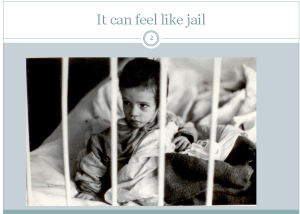
For children under 2 years of age the rights provided for under the child rearing legislation will apply.
Attending last week’s debate in the Labour Committee, Chair of the National Children’s Rights Protection and Adoption Authority Gabriela Coman argued that the amendments of the legislation in force are designed to get rid of difficulties in the conduct of adoption procedures for Romanian children in Romania.
The Chamber for Deputies is the decision-making chamber in this case.


” The Promise I Kept”- Good Books International
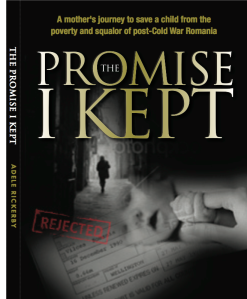
 ” The Promise I Kept” is available from Good Books International”.
” The Promise I Kept” is available from Good Books International”.
Good Books International are a not for profit who have teamed with Oxfam.
All e-tail profits from sales of books and gifts on their site are donated to Oxfam aid projects and Good Books International offer free shipping worldwide.


February 5, 2016
An Overview of Intercountry Adoption-Professor Victor Groza
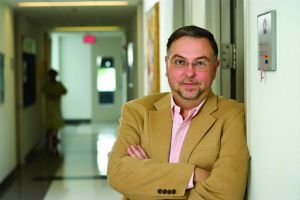
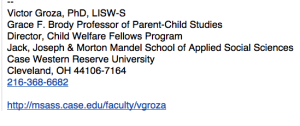
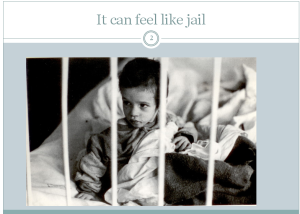
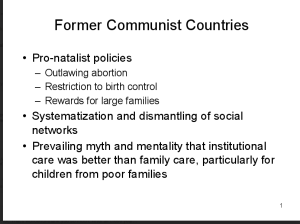
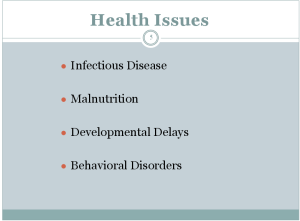
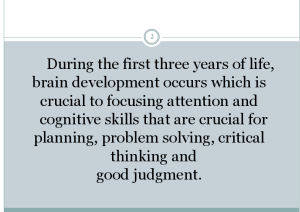
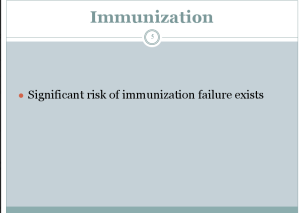
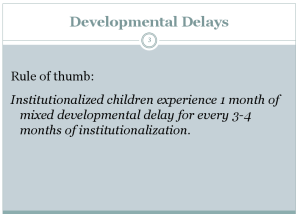
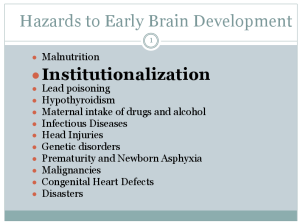
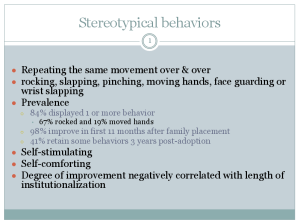
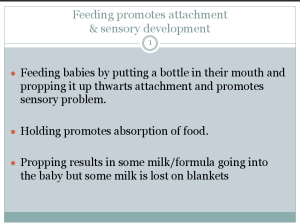
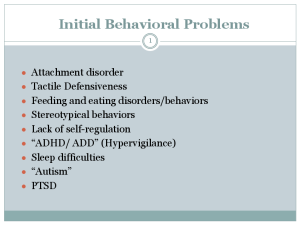
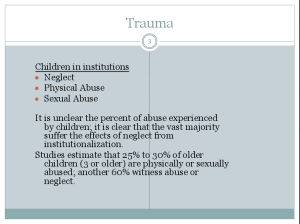
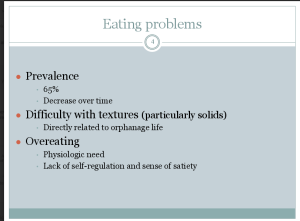
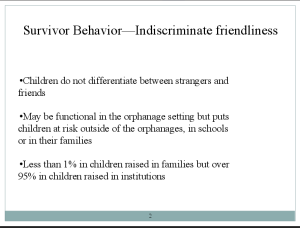
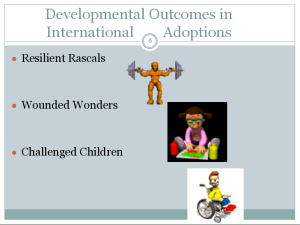 http://msass.case.edu/faculty/vgroza/ – Faculty website for further reading.
http://msass.case.edu/faculty/vgroza/ – Faculty website for further reading.
https://www.facebook.com/adoptionpartners/?fref=ts – Website about Professor Groza’s post-adoption practice.


February 1, 2016
The Benevolent Society- Post Adoption Support Services
Clients can access support within a week of making contact, either via phone, face to face or skype.
The Benevolent Society is partly government funded but also receives donations.
Our Post Adoption Resource Centre (PARC) and Post Adoption Support Queensland (PASQ) provide information, counselling and support to people affected by adoption in NSW, the ACT and QLD. We work with people who have been adopted, parents, siblings and partners. We aim to provide those impacted by adoption with support and guidance.
We can provide:
· individual counselling
· family therapy
· group counselling
· telephone counselling
· intermediary service
· assistance in finding records
· support in organising reunions
· newsletters
· research publications
· retreats
· connections meetings/ services presentations
We encourage you to contact us for support, especially if you are:
· Someone with an early experience of trauma
· Questioning your identity
· Having a sense of feeling different / not quite belonging
· Feeling loss, anger and abandonment
· Dealing with issues of trust, attachment and forming relationships
· Negotiating reunions
· Dealing with a late discovery
Get in touch
· Subscribe to our e-newsletter
· In NSW/ACT, call (02) 9504 6788
· In QLD, call (07) 3170 4600
– See more at: http://benevolent.org.au/connect/post–adoption–support–home
T 07 3170 4600
Ground Floor
189 Coronation Drive
Milton Qld 4064
January 19, 2016
Love Light Romania- Update
Love Light Romania are a beacon of light in the darkness, bringing hope.
Their long term projects not only break the cycle of poverty of the Roma people, but also improves the cultural self-image of this marginalised community.
December 28th. 2015- Dinner conversation at the Sanctuary this evening from the residents; ” here is the best place to live, we are looked after well, everyone is happy and no-one shouts and makes trouble with us.”
Jo Jowett writes- ” A busy first week of the year, one way and another and all Love Light Romania projects are a great success, this is perfect for the start of 2016. The winter vegetable parcel distribution, for the children at Albesti Roma community, is accomplishing so much. It is raising awareness of their plight, it is opening doors to future programs for them. The parents are so grateful to be able to feed their children this winter and the young people are looking so much happier.
There were renovations at the Sanctuary, new look for the laundry, new floor for the upstairs bathroom, the cloak room tiled. A new year and a new trend.
New term starts on Monday, the learning centre will be open for the first time this year. Also in Jacodu much progress has been made with the soon to be opened second hand shop. The shop is being fitted out and soon an opening day will be announced.
A very productive time…..


January 17, 2016
“Abandoned For Life” by Izidor Ruckel
History- Communist State Secrets- Children trapped alive in inhumane conditions.
Izidor has the courage to tell the truth.
`With his autobiography; ‘”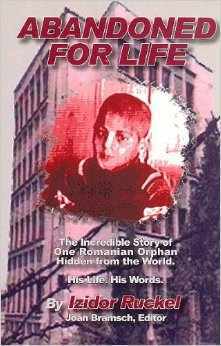 Abandoned For Life”, Izidor Ruckel has travelled from the hidden back streets of history to reach out and touch our hearts.
Abandoned For Life”, Izidor Ruckel has travelled from the hidden back streets of history to reach out and touch our hearts.
Courage comes in all shapes and sizes. Izidor, a thin, bony young boy with a disability has the courage to not only overcome his horrendous childhood, but to also help others.
How one evil dictator, Ceausescu, could cause so much suffering to so many innocent children’s lives, is beyond comprehension.
Izidor describes the brutal, heart-wrenching detail of the horrors which he witnessed and endured.
Izidor has taken ownership of his destiny and made it his life’s mission to help Romania’s other abandoned children. He has raised his voice on behalf of Romania’s 60,000 voiceless, abandoned children.
I challenge anyone to read ” Abandoned For Life” and not come away changed from the experience and challenged to make a difference.
January 14, 2016
Australian Adoption Statistics 2014-2015.
Adoptions (AIHW) – Australian Institute of Health and Welfare
http://www.aihw.gov.au/adoptions/
The number of children being adopted internationally into Australia continues to decline at an alarming rate. This is not because there are fewer couples wishing to adopt or fewer children available for adoption, as we are often led to believe. The blame lies with the Australian governments prohibitive red-tape and lengthy waiting times.
Adoptions
Adoption is one of a range of options used to provide permanent care for children who are unable to live with their families. It is a legal process where rights and responsibilities are transferred from a child’s parents to their adoptive parents.
The categories of adoption used in national reporting are:
Intercountry adoptions—adoptions of children from countries other than Australia who are legally able to be placed for adoption, but who generally have had no previous contact or relationship with the adoptive parent(s). Expatriate adoptions are not included in the numbers for intercountry adoptions.
Dynamic data display: Intercountry adoptions
Dynamic charts and data for intercountry adoption
Description and notes
Local adoptions—adoptions of children who were born or permanently residing in Australia before the adoption, who are legally able to be placed for adoption, but who generally have had no previous contact or relationship with the adoptive parent(s).
‘Known’ child adoptions—adoptions of children who were born or permanently residing in Australia before the adoption, who have a pre-existing relationship with the adoptive parent(s) and who are generally not able to be adopted by anyone other than the adoptive parent(s). Known child adoptions include adoptions by step-parents, other relatives and carers.
These are the latest figures from Adoptions Australia 2014–15.
Adoptions in Australia, 2014–15
74% decline
in adoptions in Australia in the last 25 years.
1 in 3
adoptions were carer adoptions.
Carer adoptions increased more than four fold in the last decade.
41%
of local adoptees were under 1.
10%
of intercountry adoptees were under 1.
94%
of adoptees who came from overseas were from Asia.
>5 years
was the typical wait time for families who adopted a child from overseas in 2014–15.
This has increased by more than 2 years since 2007–08.
1 in 2
birth mothers of local adoptees were aged under 25.
Almost all (89%) were unmarried.
91%
of local adoptions were ‘open’ (that is, all parties agreed to some contact).
61%
of ‘known’ adoptions were by non-relative carers (such as foster carers), and
34%
of ‘known’ adoptions were by step-parents.
Of the twenty countries listed by the Hague Convention, the statistics show that for 2012-2013, Australia was number eighteen, or third from the bottom of the list. The adoption rate is calculated per 100,000 inhabitants for a country.


January 11, 2016
Mum and Dad-Abandoned Children in Romania
Mum & Dad. Abandoned Children in Romania
Announcement published by Wilhelm Tauwinkl on Thursday, January 7, 2016
Type:
Conference
Date:
April 8, 2016 to April 9, 2016
Location:
Romania
Subject Fields:
Social Sciences, Social Work, Childhood and Education, Public Policy
Romania has the largest number of abandoned children in the European Union. The number of children in the care of the child protection system is over 60,000. Of these 60,000 institutionalised children, only 3,000 are adoptable. The number of applications for adoption is 1,700.
Every child in foster care costs the state between 500 € and 700 € a month, while the allocation for a child placed with a relative or other families is 150 €, and this while the allocation for all other children is 20 €. Although many institutionalised children enjoy far better material conditions than those enjoyed by other children, a lack of a sense of belonging, emotional insecurity and a lack of family support lead to psychological trauma with serious consequences in the long term. Their future social integration becomes doubtful after spending a long period of time as the “source of income” in families who receive the equivalent of at least one national minimum wage for the care they provide.
With almost 20% of children reported as having disabilities, the question arises as to whether recovery from these disabilities would not have been easier had they been identified earlier, or if the children had been living in a family environment from birth or had benefitted from ongoing therapy.
— What way of thinking makes this kind of situation possible?
— Why there are so few adoptable children?
— Why are so few people willing to adopt?
— Why do so many children live in care until the age of 18 or 26?
— What policies lead to this type of discrimination?
— Why do we need such excessive bureaucracy, which only makes adoption more difficult and turns the abandoned child into a kind of property of the state?
— How much of this is caused by poverty and how much by the hypocrisy of a society that calls itself Christian?
— What mental and physical developmental delays do abandoned children suffer from?
— What is the role of the immediate family and the extended family in cases of abandonment and adoption?
— How do we accept responsibility in the relationship between my child and our child in cases of abandonment and adoption?
— What are the long term consequences of growing up in the care of the social services system?
These are just some of the questions we will try to answer during the conference.
The conference will be divided into the following sections: the legal framework, the social problems that occur when children grow up in the care of the state, economic analysis, psychological approaches to abandonment and adoption, the involvement of the Church (irrespective of denomination) in helping abandoned children and encouraging adoption, the image of the orphaned child and the “step parents” in literature, and the condition of the adopter.
Invitees of the conference include decision makers from government ministries and the world of politics, staff members of the directorate for social assistance and child protection, representatives of NGOs concerned with the plight of abandoned children and the adopting families, representatives of the Church of all denominations, representatives of religious orders, specialists in the fields of medicine, psychology, sociology, social care and law, members of civil society as well as anyone interested in the phenomenon of child abandonment and adoption, in general, and in Romania, in particular.
To register for the conference please send a short abstract of your presentation and a short CV by 10 March 2016 to: univ.buc.ftrc.conference@gmail.com.
The conference will take place at the Faculty of Roman-Catholic Theology – 19, General Berthelot Street, Bucharest. The participation fee is 30 €. A selection of the papers presented at the conference will be published. A limited amount of free accommodation is available at Hotel Academica in Bucharest.
Contact Info:
Assoc Prof Dr Gabriela Blebea Nicolae
Facultatea de Teologie Romano-Catolica
Str. G-ral Berthelot 19
010164 Bucuresti
Romania
Contact Email:
univ.buc.ftrc.conference@gmail.com
URL:
http://www.ftcub.ro/conferinta-abandon_EN.html
Sponsors


January 10, 2016
Redifining Family Conference; Growing Families Through Adoption, Donor Conception and Surrogacy
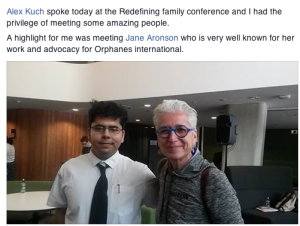 Alex Kuch Is an advocate for International Adoptions from Romania, he was an orphan himself. He seeks to bring awareness globally for all orphans.
Alex Kuch Is an advocate for International Adoptions from Romania, he was an orphan himself. He seeks to bring awareness globally for all orphans.
http://www.facebook.com/internationaadoptionsromania
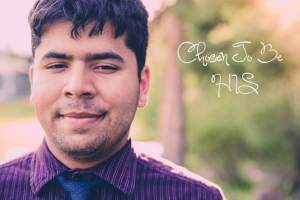 Auckland- New Zealand University of Technology.
Auckland- New Zealand University of Technology.
Alex Kuch. a student at the University, Romanian adoptee and adoption advocate, has co-ordinated this conference.
Alex was only eighteen years of age when he first spoke to the Romanian Parliament, advocating for the re-opening of International adoptions from Romania.
Of particular interest to me is the session by Dr. Jane Aronson, who will be travelling to New Zealand from America on the invitation of Alex Kuch.
Dr. Jane Aronson is founder and C.E.O of World Wide Orphans Foundation.
Her field of expertise is International Pediatric Health Services.
Dr. Aronson’s work has taken her to many countries around the world, including Romania.





